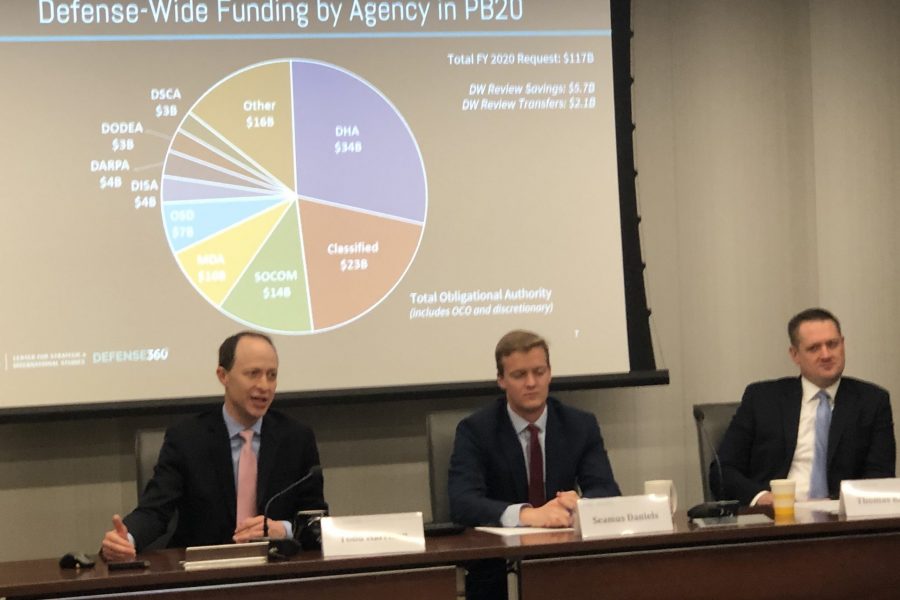The Defense Department’s fiscal 2021 budget request will be released Feb. 10, offering new insight into funding plans for the new U.S. Space Force, glimpses into whether the Defense Department is changing its investment strategy for great power competition, and projections of what future spending might look like once the Budget Control Act expires in 2022, according to analysts at the Center for Strategic and International Studies.
Todd Harrison, CSIS director of defense budget analysis, said he expects to see between $12 billion and $15 billion in funding transferred from existing space accounts to the U.S. Space Force. On top of that, Lt. Gen. David Thompson, the new service’s vice commander, has said he expects the Space Force will need less than $500 million per year in new money—less than $2 billion total from fiscal 2020-2024. The entire department is working to keep the service lean and agile.
Many of the details are still being worked out, with a slew of reports due to Congress in the coming months outlining everything from how the reserve components will be incorporated into the new service to how the department plans to streamline space acquisition. However, Harrison said he does expect the Space Force to have its own line items for things like operations and maintenance and military personnel, shedding some light on the service’s near-term plans.
In a recent interview with Air Force Magazine, Secretary Barbara Barrett said “one of the ideas” being discussed is making the Air Force’s unique pass-through funding, or non-blue budget, the core of Space Force funding. The pass-through affects USAF’s topline, but the service does not actually control what’s in that account, most of which is highly classified and never really discussed.
Such a change would require approval from the Office of Management and Budget as well as congressional appropriators, so don’t look for it in the budget submission. But it could be an ongoing topic of debate through the rest of the budget cycle.
“It is interesting that Barrett proposed putting it in the Space Force budget. It seems to acknowledge that this is space funding, which I don’t think they’ve acknowledged before,” he said. He suggested a better option would be to move the pass-through funding to a defense-wide account, saying the money no more belongs to the Space Force than it does to USAF.
“Moving it to Space Force will implicitly reveal how some of that money is being spent,” which may run counter to leaders’ intent, he added.
Analysts will be watching to see whether the 2021 request backs up talk of refocusing priorities toward great power competition.
“All that talk and all that hype shows in how they are investing more in research and development, innovative new technologies. That was true in FY20. It was not true in the projections,” Harrison said.
The 2020 budget request showed research, development, test, and evaluation “peaking” in 2020, and then declining “every year after that,” he said. “That does not seem to be consistent with this refocus on great power competition, innovation, modernization … so we’re going to be watching that.”
Fiscal 2021 is the last year for sequestration caps, so analysts also are going to be paying close attention to the future years defense plan to glean what the administration anticipates for the future.
The spending caps were supposed to cut defense spending by roughly $1 trillion dollars from 2012 to 2021, but five different budget agreements in that span increased the caps by a total of $435 billion. Instead of a ceiling, the budget caps set “a floor for negotiating,” said Seamus Daniels, CSIS program manager for defense budget analysis.
“As we’re moving into ’21 and eventually ’22,” he asked, “the question is, what does regular order look like post-BCA?”
